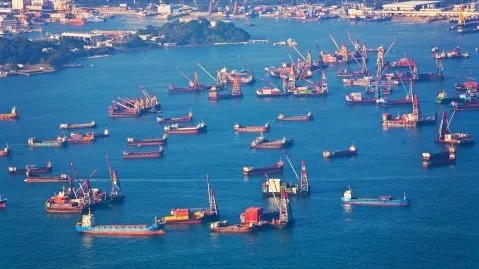
Marine, aviation, and transit insurance in APAC to balloon to $16b by 2026
It is estimated to grow at a CAGR of 6.4%.
Marine, aviation, and transit (MAT) insurance in Asia Pacific (APAC) is expected to grow to $16b by 2026 in terms of written premiums, boosted by positive economic developments according to data and analytics firm GlobalData.
MAT insurance in APAC will grow at a compound annual growth rate of 6.4% from 2021 to 2026 as trade activities increase, flight services recovers, and demand from renewable energy infrastructure projects help the insurance segment.
According to GlobalData senior insurance analyst Deblina Mitra, MAT insurance is estimated to have recovered in 2021 with 7.2% growth after remaining almost flat in 2020 as the COVID-19 pandemic adversely impacted air travel, and caused supply chain issues.
ALSO READ: Asia commercial insurance pricing increases sluggish in Q2
Mitra adds that a big part of the growth in MAT insurance segment is the establishment of the Regional Comprehensive Economic Partnership (RCEP) in January as this is expected to create new business opportunities for insurers in APAC. RCEP involves 15 regional markets including China, Japan, and South Korea.
“MAT insurers will also benefit from the ongoing shift towards clean energy in the Asia-Pacific region. The construction of offshore energy plants to replace fossil fuels, such as wind power projects, have gained traction in the region creating demand for marine renewable insurance lines within MAT insurance. China, India, Australia, and South Korea are amongst the major markets for wind and hydro energy in the region,” Mitra said.
There is also a chance of increased premiums and policy wordings revision for MAT insurance as insurers’ prime focus will be on the Russia-Ukraine crisis as insurers re-assess their exposure to war risks.
“The Asia-Pacific MAT insurance industry will present expansion opportunities for domestic insurers, as many foreign insurers, especially from Europe, are either reducing their presence in the region or exiting from the market due to unsustainable natural hazard losses. Also, their withdrawal from coal-related underwriting, to comply with ESG targets, enhances opportunities for the domestic insurers. The profitability of insurers, however, remain exposed to enhanced security threats posed by geopolitical tensions, supply-chain issues, volatility in oil prices, and extreme weather repercussions,” Mitra said.



















 Advertise
Advertise







